Sparc: Social And Public Art Resource Center SUR:Biennial 2019
SUR:Biennial > 2019 > SPARC
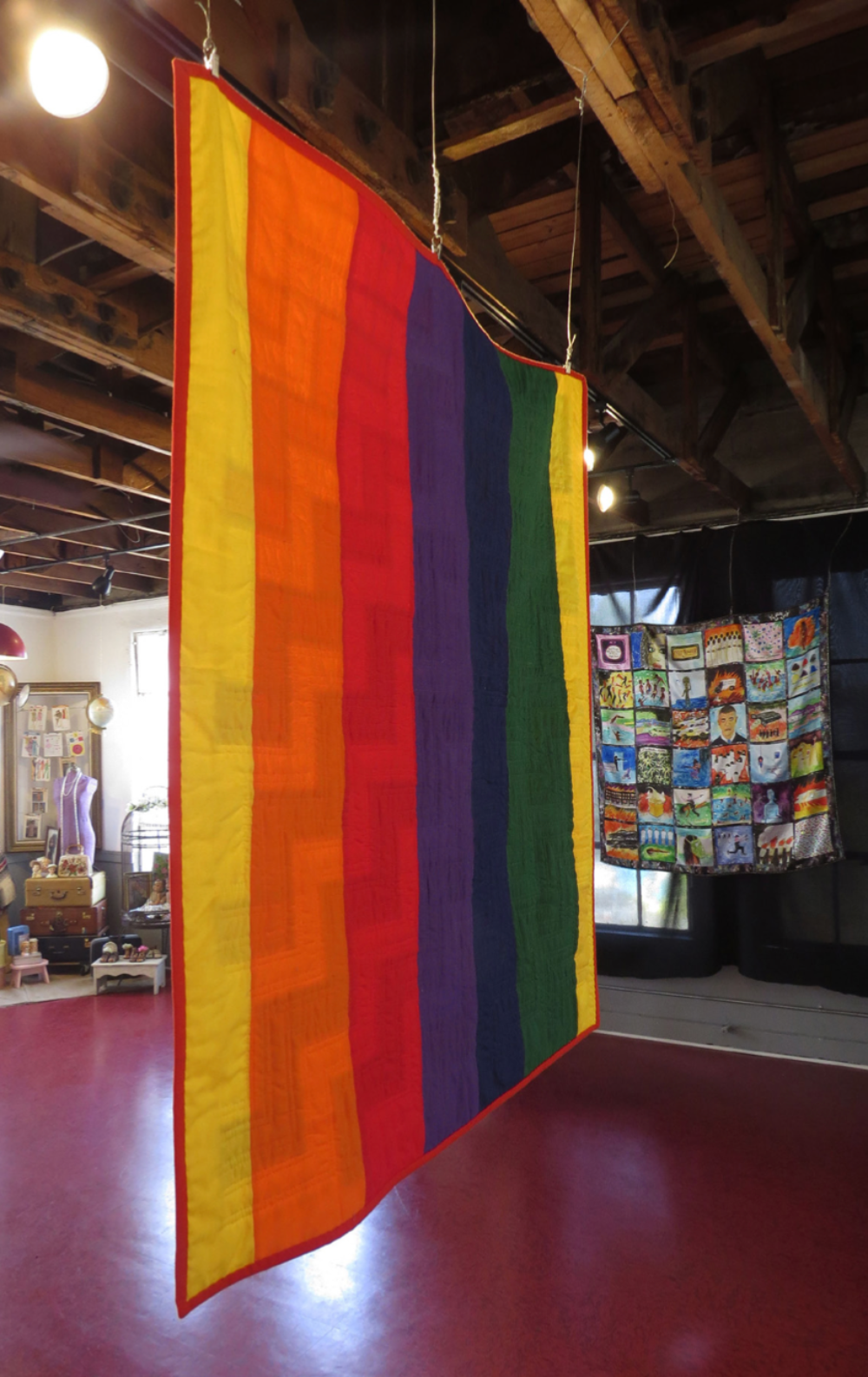
SPARC Installtion Shot.
DE COLORES MEANS ALL OF US Artist Voices in a Multi-Cultured Century
This exhibition focuses on cross cultural relations between female-identified Latinxs,
artists of Caribbean descent and African American communities living in Southern California.
The curated effort focuses on Black, Caribbean and Brown relations and our shared
history of struggle and how more than ever we need to work hard to continue strengthening
our alliances. The premise asserts that knowing and exploring each other’s cultural
production and history through our art, we can move beyond the petty and the divisiveness
that seems to be rampant in our country today. The multimedia exhibition, featuring
9 artists from differing communities in dialogue: Sandy Rodríguez, whose field research
for her latest body of work, titled “Codex Rodríguez-Mondragón” entails hands- on
research into native North American flora and fauna; interdisciplinary artist Cole
James, whose paintings
and performance work is grounded in transcontinental research on the migration patterns
by which different communities share the power of medicinal plants across continents
and cultures; performance artist Claudia Rodriguez, whose work explores with great
intimacy what it is like to be a queer Latinx scholar-creative in the age of 45 in
increasingly critical times; Photographer/cinematographer Maritza Alvarez whose work
seeks to educate new generations the ancient uses of flowers and plants according
to native tribes; artist Star Montana, whose photographs offer a vibrant historiography
of Latinx and Chicanx alternative communities; artist and Black Lives Matter founder
Patrisse Cullors, presenting a powerful video of a performance that took place in
San Diego earlier in the year; Lavialle Campbell, whose textile-based sculptural paintings
have been focusing on topics of police violence and colonialism; and installation
artist Ana Navarro whose work is mostly presented on social media
and in community gatherings, fairs, tailgate parties and indoor and outdoor markets,
bringing her art to the community that may not frequent museums or galleries.
The exhibition, inspired by alliance work undertaken by organic intellectual, multicultural, internationalist allies such as Elizabeth (Betita) Martínez, Lisa Lowe, and Angela Davis, who worked together in the early nineties and onward to bring attention to how art, music, poetry and literature are crucial in building strong social movements for meaningful change. As performance artist Patrisse Cullors has shown with her most recent body of work, “Respite, Reprieve and Healing”, bringing together diverse communities in Los Angeles in an exploration of healing and ceremonies that highlight our shared histories of struggle has an enormous potential to change people, communities and our world as a whole. The collaborations, the dialogues created by bringing together artists from very different communities who would otherwise not come together to explore the commonalities of their socialization, struggles and endurance demonstrates that art can be a vehicle for increased consciousness raising, awareness about other cultures, and a serve as a foundation for strong movements for social change, because art offers us ways of seeing the world through a different, more well-rounded lens.
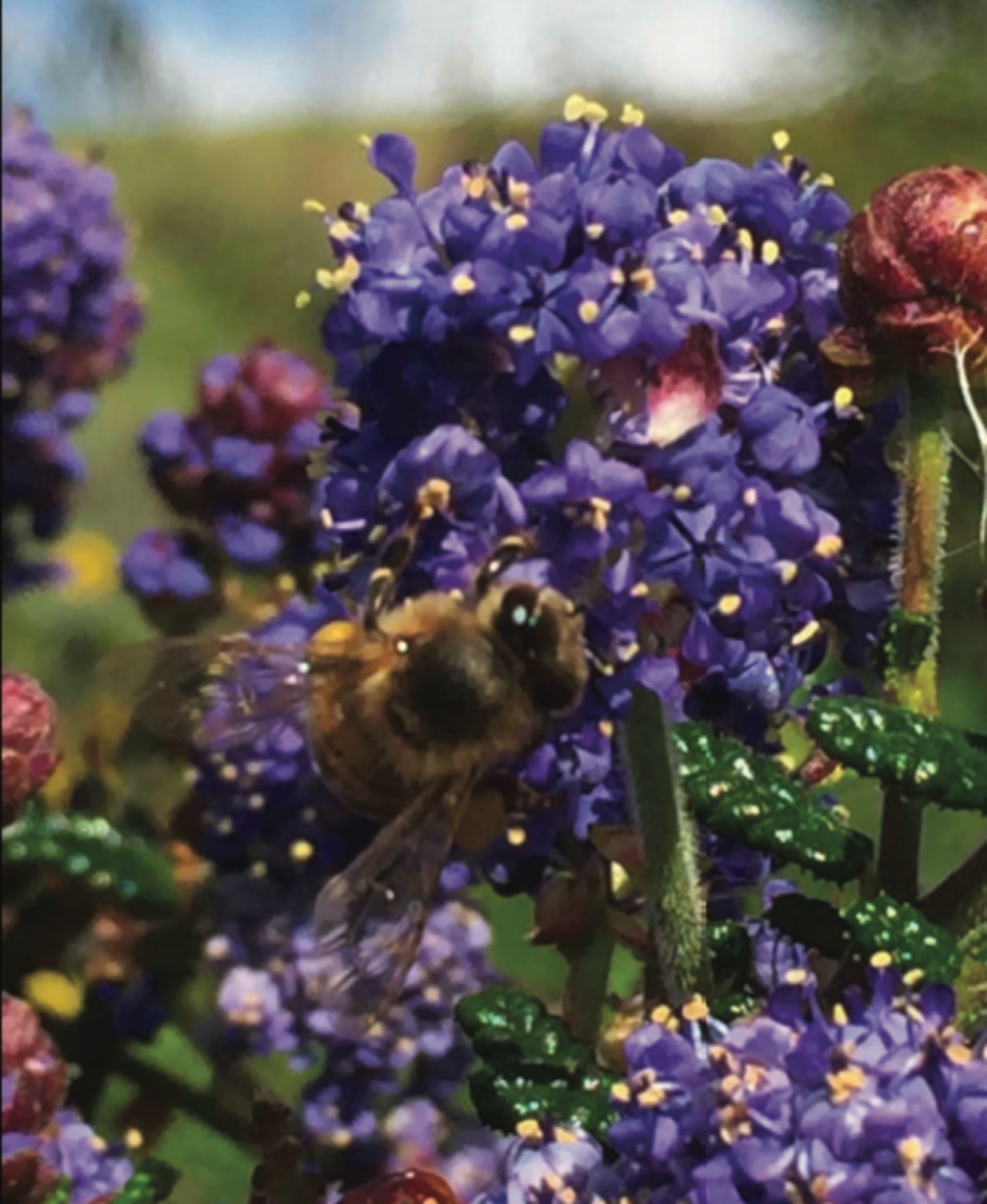
Maritza Alvarez, Ceanothus 1, Digital Projection, 2019.
Maritza Alvarez
Maritza Álvarez is a cinematographer and photographer based in East Los Angeles. She received her BA from UC San Diego and is interested, with her photographs, in building bridges, community, and consciousness one step at a time. For the SUR:biennial, she presents photographs of the Ceanothus, a shrub indigenous to Southern California, that is known for its medicinal and healing properties. The dried flowers of the Ceanothus plant are used by local indigenous communities to make soap. The photographs were taken in June of 2019 in the working-class neighborhood of El Sereno in NorthEast LA.
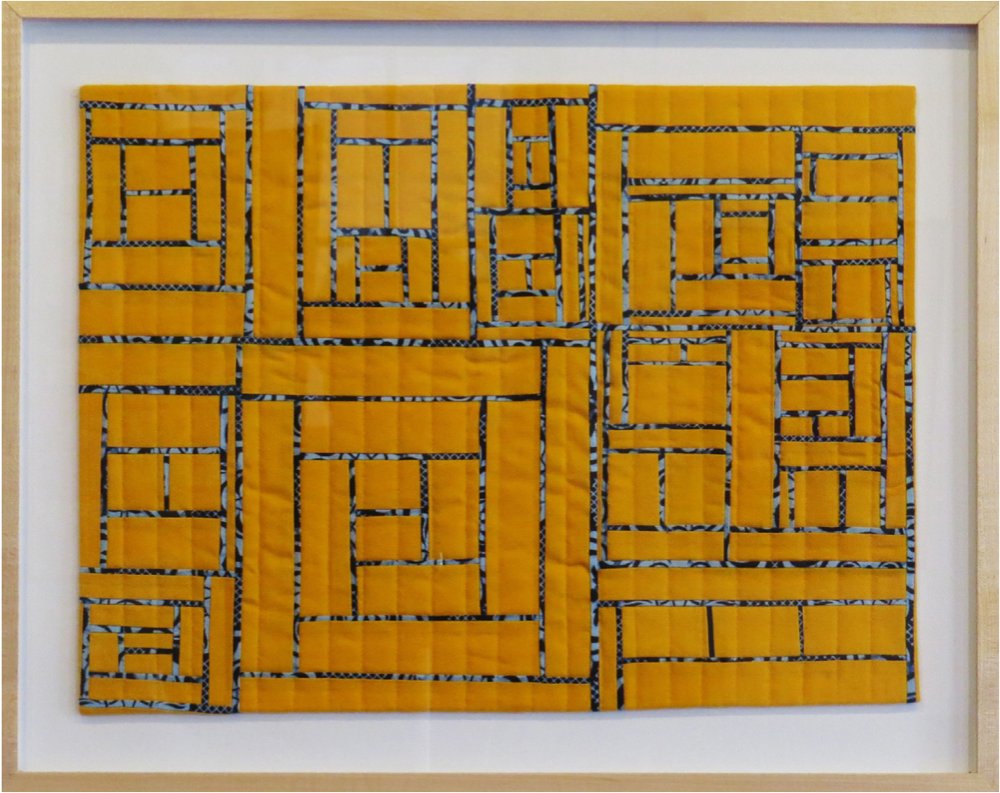
Lavialle Campbell, Untitled, Blue Papaya, Quilt, 16.5" x 20.5", 2019.
Lavialle Campbell
Los Angeles-based, mixed-media artist Lavialle Campbell works in a variety of media, including quilts, glass, and ceramics, in which she explores the use of fiber arts to create contemporary quilts into deep, thought-provoking abstractions. For Campbell, aesthetic is not based in tradition,
but firmly based on modernism, Japanese minimalism, and architecture. Her work features monochromatic palettes, often interspersed with color, usually saturated and bold. Inspired by her mother, whose creativity included sewing, cooking, and crafts, and her father, who was a photographer, Campbell was attracted to a variety of media exploring a wide range of textures.
While attending LA Southwest College, Campbell was exposed to the reality of a career in art. She later studied foundations at Otis College of Art and Design, graphic design at UCLA, as well as art and architecture at Santa Monica College of Design. Through the Seagram’s Gin Perspectives in African American Art Program, she was selected to be an artist-in-residence in 1998 at California African American Museum.
Her most recent series focuses on children of color who have been exposed to police
brutality. In this series of quilts she references Philando Castille’s daughter, in
particular from a police video that surfaced online of the four-year-old girl comforting
her mother in the backseat after Castille is shot in the front. The daughter cries,
“please stop crying mommy, I don’t want you to get shot next”.
For the SUR:biennial, Campbell’s contribution consists of a richly designed double-sided
rainbow quilt that allowed her to work with rainbow fabric in a way that appreciates
its current meaning and a quilt referencing her thoughts on colonialism.
In the work, Blue Papaya, the blue fabric references colonialism in Africa, as it was bought from African women who cannot afford to buy “African” fabric from original European sources, and is manufactured in China. The papaya colored grids in the piece reference America as the fabric is American, thus resulting in the signifiers: Colonialism-African/America.
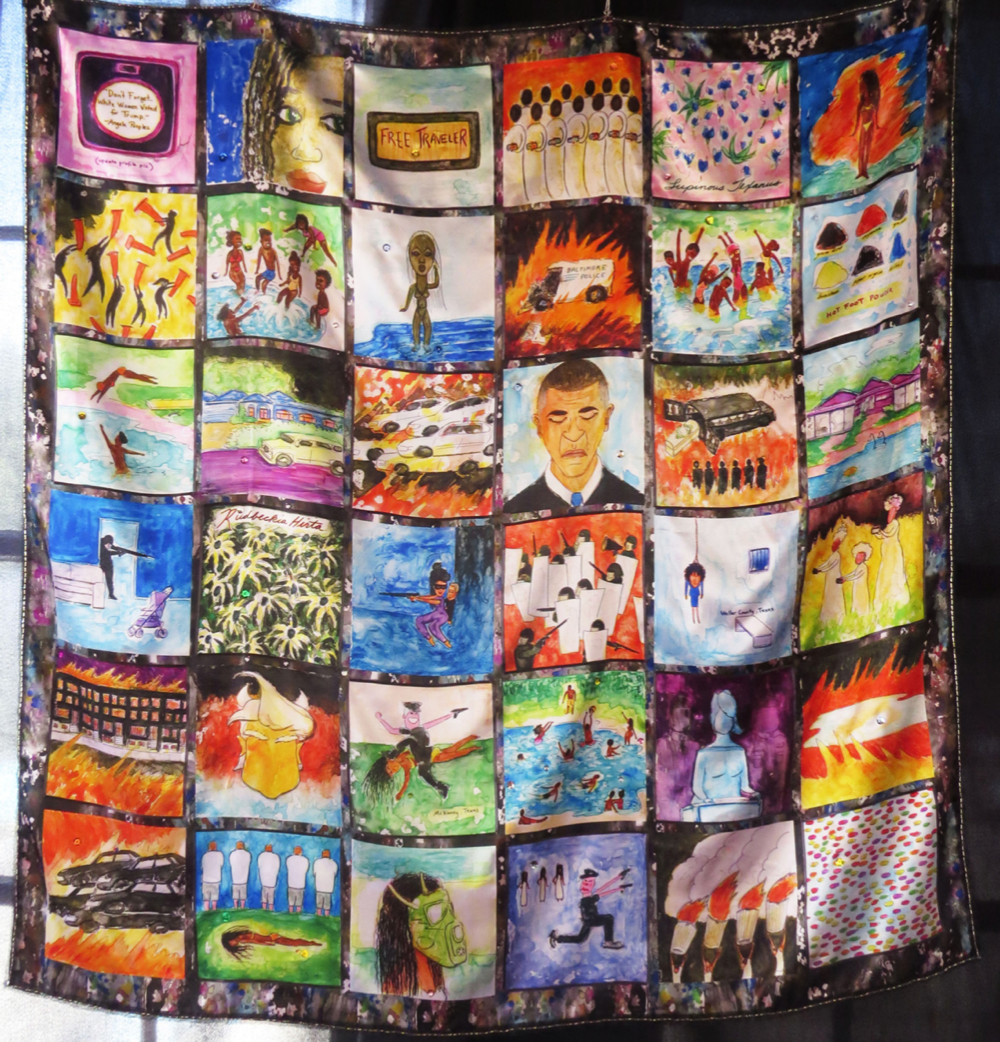
Zeal Harris, Liturgical Language of a Free Traveler, Frabric, 60" x 60" 2017.
Zeal Harris
Zeal Harris is known for creating seductive, caricaturesque, political, urban-vernacular, story paintings. She holds an MFA in Studio Art from Otis College of Art & Design. She has shown in the Port Au Prince Haiti Ghetto Biennale, Mesa Contemporary Arts Museum, the California African- American Museum, 18th Street Arts Center, and the Caribbean Cultural Center of the African Diaspora in New York. Zeal has been mentioned in art reviews in the Huffington Post, Fabrik Magazine, The Culture Trip, Obsidian Journal, Requited Journal, the Blk Grrrl Show, Clocktower Radyo Shak, the LA Weekly, and The Los Angeles Times. She is a featured artist in UCLA professor Paul Von Blum’s recently published book on African-American artists in Los Angeles.
Harris was raised in southern Virginia, in a small town named Phoebus, adjacent to Hampton University. It was her Great Aunt whom she called “Mama”, and the customers of her soul food cafe who first inspired her to become an artist. Encouraged by a high school teacher, Zeal got a job as portrait and caricature artist at the local amusement park, Busch Gardens in Colonial Williamsburg. She worked during the summers and used income from that job to enter Howard University in Washington, DC, where she majored in Theater Technology with a minor in Art. She is an adjunct Professor at Otis and is currently a teaching artist at LACMA.
For the SUR:biennial, Zeal is exhibiting three unique works, two of which are dye sublimation on ploycharmeuse, depicting Afro-futurist woman- centered mini-stories rich in cultural signifiers and a wall installation consisting of ten paintings on wood panels depicting a semi-fictional narrative about travel, friendship and intercultural adventure.
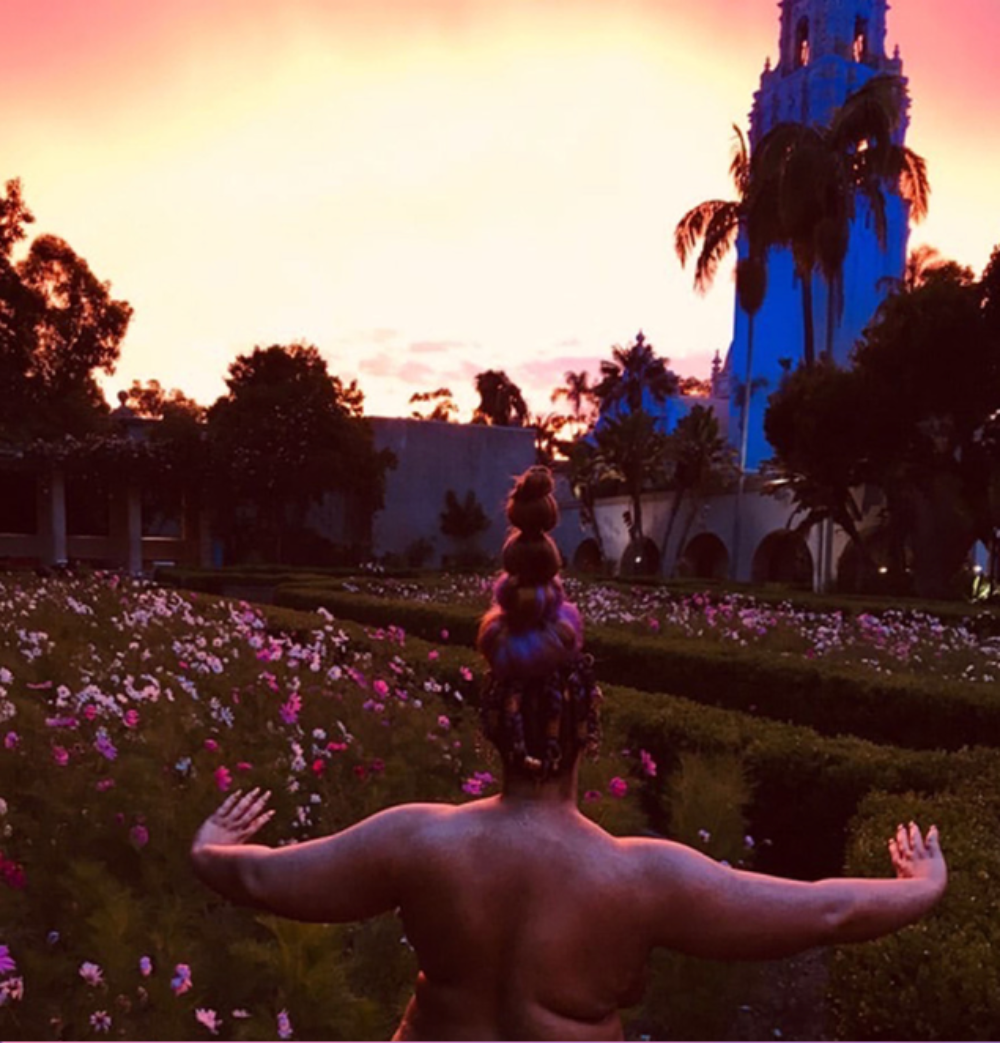
Patrisse Cullors, Forging Territories Performance, Photographic Documentation by Nena
Soulfly, 2019.
Patrisse KHan-Cullors
Artist, organizer, educator, and popular public speaker, Patrisse Cullors is a Los Angeles native and Co-Founder of the Black Lives Matter Global Network and Founder of grassroots Los Angeles based organization Dignity and Power Now.
In 2013, Cullors co-founded the global movement with the viral twitter hashtag #BlackLivesMatter which has since grown to an international organization with dozens of chapters around the world fighting anti-Black racism. She has been on the frontlines of criminal justice reform for the last 20 years and is leading Reform LA jails a ballot initiative that will be voted on in March 2020.
In January 2018, Cullors published her memoir, When They Call You a Terrorist: A Black Lives Matter Memoir, which became an instant New York Times Bestseller. She’s received many awards for activism, movement building and art, including being named by the Los Angeles Times as a Civil Rights Leader for the 21st Century. A self-described wife of Harriet Tubman, Cullors has always been traveling on the path to freedom. She is a recent USC grad receiving her MFA in performance art from the Roski School of Art and Design.
For this iteration of the SUR:biennial, Cullors presents the Los Angeles premiere of the documentation video of her performance at the San Diego Art Institute, for Forged Territories, Queer Afro and Latinx Contemporary Art, curated by Rubén Esparza in 2019. The exhibition brings together African-American and Latinx members of the LGBTQ community pioneering in a frequently inhospitable land; artists engaged in cultural storytelling that describe themselves, their friends, and their environments in striking visual ways.
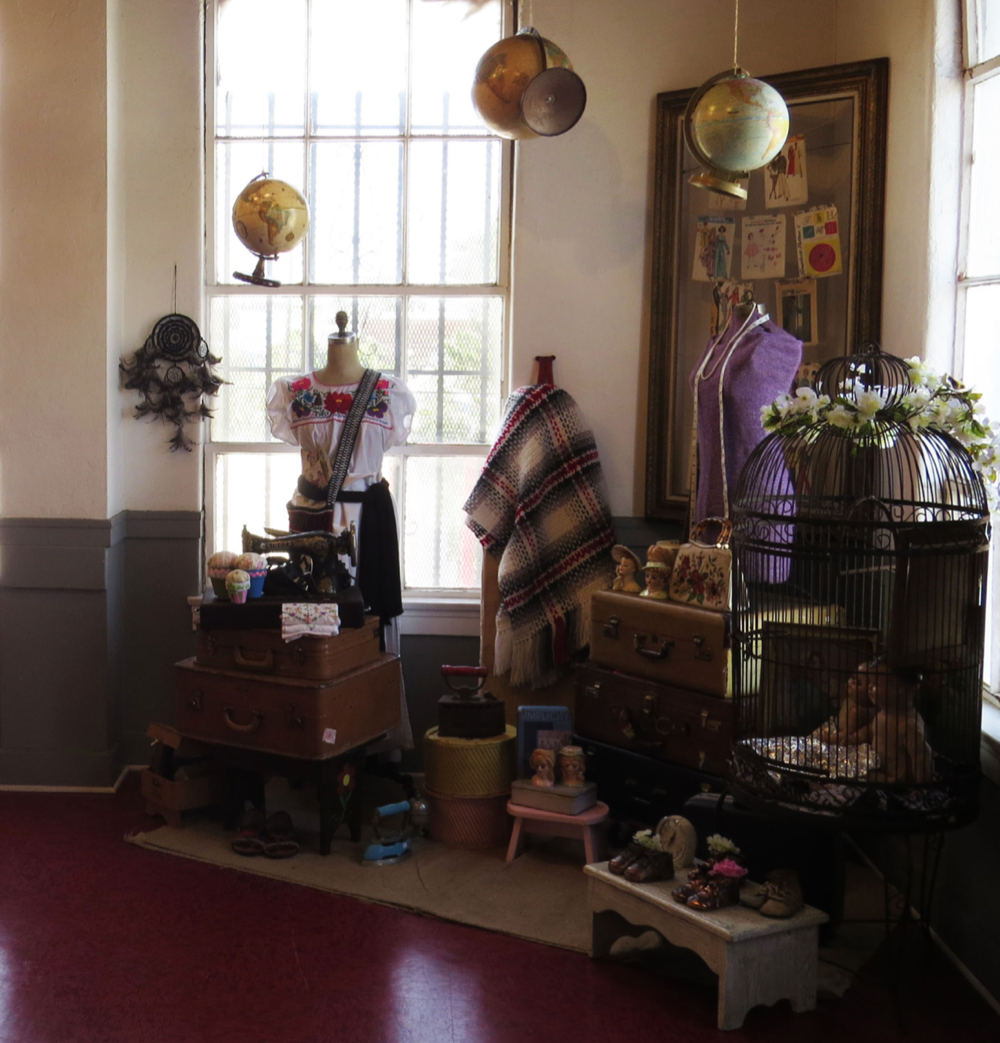
Ana Navarro, Untitled, Site-Specific Installation of Found Objects, 2019.
Ana Navarro
A native of El Salvador, Ana Navarro started creating complex assemblage art since she was a little girl in El Salvador, using anything that was available, from sticks and stones to found objects, seeds, used household items, and discarded toys. Completely self-taught, she now holds expert knowledge of mid-century modern objects, furniture and art as well as antiques, which she utilizes in order to create large-scale public installations in both indoor and outdoor community markets and fairs.
For the SUR:biennial, she has created a site- specific installation incorporating items from various decades of “Americana” combined with contemporary items related to domesticity and manual labor and home production, such as household goods, patterns and other sewing and clothing production tools and equipment. Her installation calls attention to desplazamiento/ displacement, protests child caging and incarceration of the most vulnerable, and highlights issues of class, race and the cultural melting pot that is her adoptive city of Los Angeles.
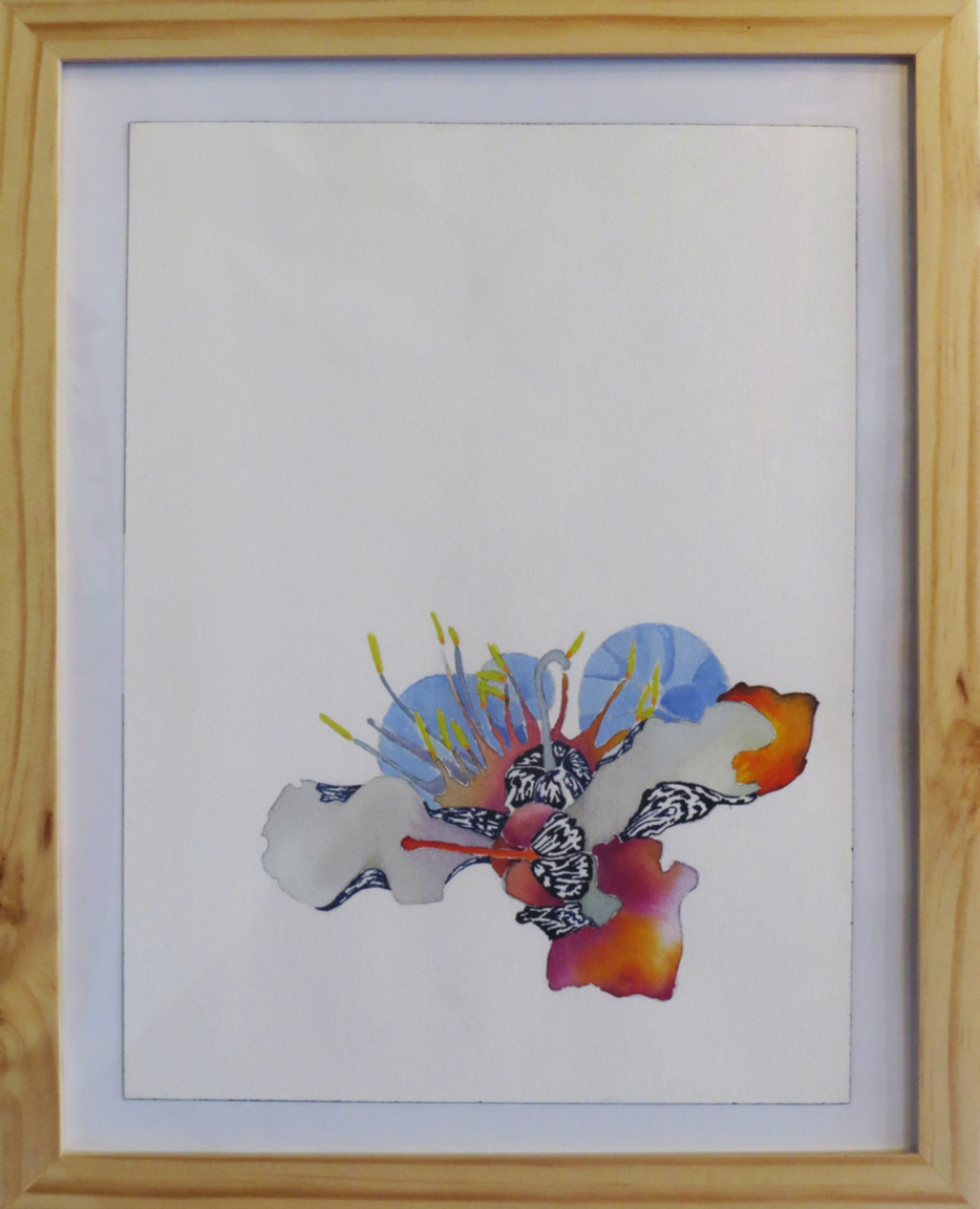
Cole Jupiter James, Rue Project #1 Series, Watercolor, 12" x 14", 2018 - Present.
Cole Jupiter James
Cole Jupiter James is an interdisciplinary queer artist navigating the African Diaspora.
Her
work is composed of the intersections between digital production and analog collections
of lived experiences. Through her digital media work she expands or collapses the
intersections of race and gender though the lens of language and aesthetics: She collects
experiences and conversations about race, class and gender. In her work, the idea is
to confront the media in which her responses to these collisions and encounters manifest.
These manifestations take many forms including activism, poetry, painting, drawing, sound and video. She uses digital media to access the multiplicity of meaning between language and image. Her activism allows her to engage with the public, as she explores the role of Art within larger systems of power.
The works exhibited in the SUR:biennial are part of her project, Meditations on Rue. While engaging with the community at Woodlawn Cemetery, she met community members with bloodlines that spanned back to the incorporation of the city. They mentioned a need to maintain the history and honor the ancestors through art. Meditations on Rue explores the relationship her ancestors had with medicinal plants, and involves an investigating the use of African Rue in Africa and the uses of American Rue in the South before 1900. For this project, she is creating a series of botanical illustrations and a digital medicinal guide to preserve ancestral knowledge for healing.
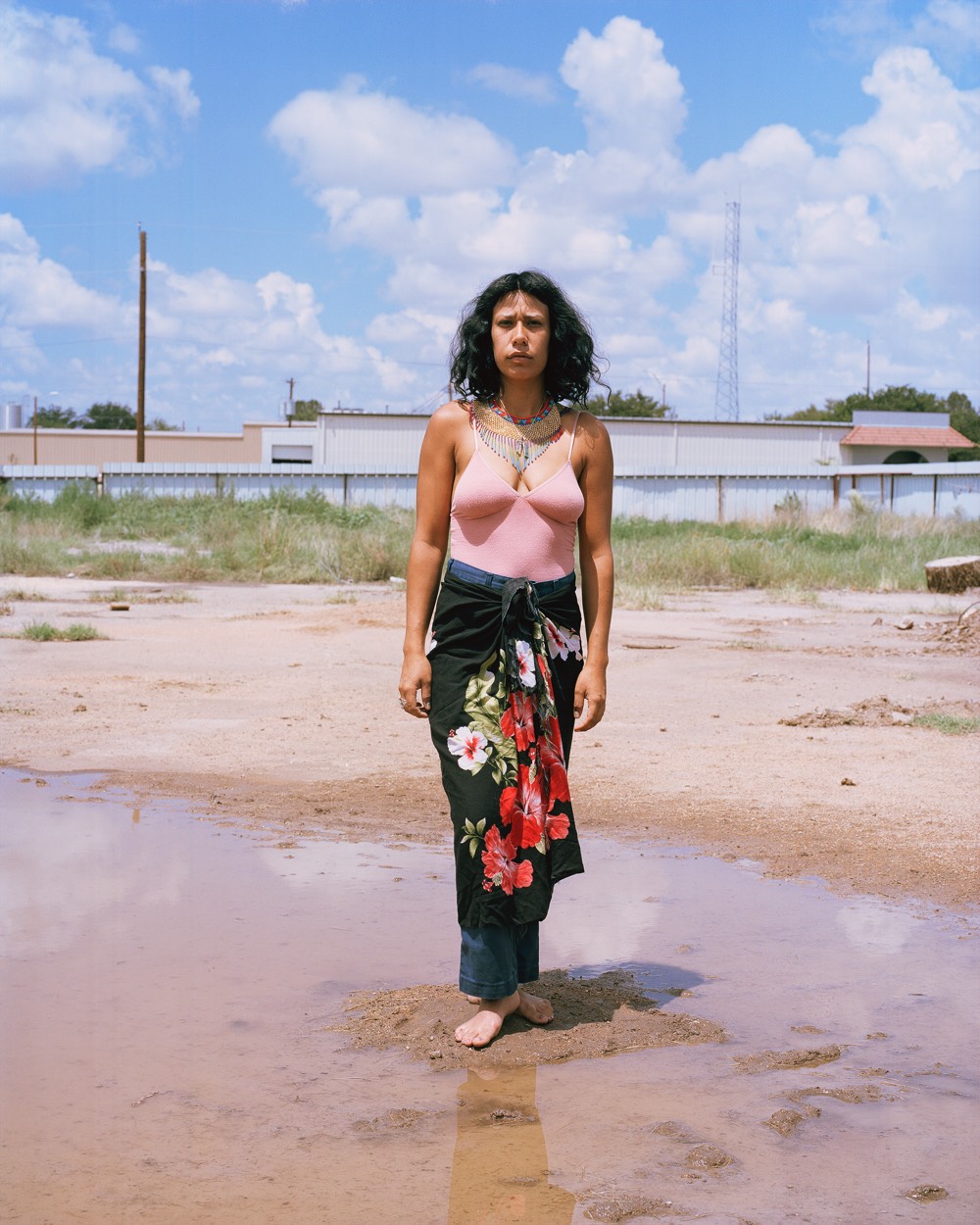
Star Montana, Marie Mae (Marfa Texas) Archival Pigment Print, 27" x 35", 2017.
Star Montana
Star Montana is a photo-based artist who lives and works in Los Angeles, CA. She was
born and raised in the Boyle Heights neighborhood of East Los Angeles, which is predominantly
Mexican American and serves as the backdrop to much of her work. Star’s imagery deals
with class, social environment, and identity within the personal,
her family. Three dots and Tear drops: a long- term project with her family that has
dealt with fragmented histories, loss, and the hope of the next generation was on
view at the Vincent Price Art Museum and the UCLA Chicano Studies Research Center.
More recently, she has begun to work on her themes within a larger scope of Los Angeles
residents via portraiture and video which resulted her in most recent solo show I
Dream of Los Angeles at the Main Museum. Montana received her BFA from the School
of Visual Arts in 2013 and in 2019 completed her Masters of Fine Art at USC.
For the SUR:biennial, Montana included her photograph Maria Mae, Marfa Texas, a limited edition of 10, which was first exhibited in Tierra. Sangre. Oro., Ballroom’s Fall 2017 exhibition. Star Montana’s striking medium format portraits of people of color are narrative works that explore intergenerational trauma, migration and the representation of brown bodies. The majority of Montana’s portraits are taken in her community in Los Angeles, however, Maria was made in Marfa at the worksite where artist Maria Garcia built bricks with Rafa Esparza for the exhibition Tierra. Sangre. Oro., part of Ballroom Marfa’s Fall 2017 exhibition.
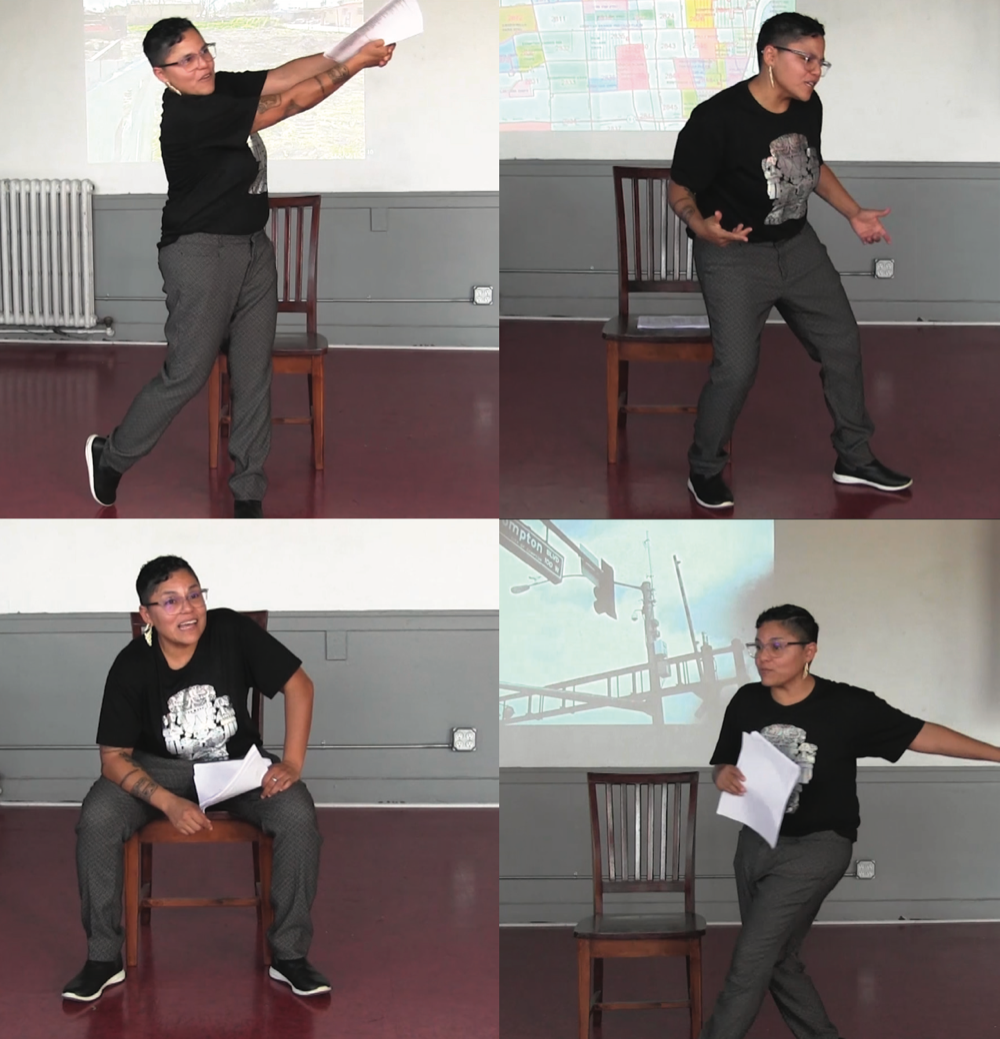
Caludia Rodriguez, Midnight Steel, Live Performance Reading, 2019.
Claudia Rodriguez
Claudia Rodríguez is a community scholar, educator, creative writer and performer from Compton. She received her MFA in creative writing from the California Institute of the Arts (CalArts). She published her first collection of poetry “Everybody’s Bread” in 2015 with Korima Press. The book was a Lambda Literary finalist. For the past twenty years, she has developed work for/about and with marginalized communities.
As a 2014 recipient of an Artists in Residence Grant from the City of Los Angeles Department of Cultural Affairs, she developed the project “Nuestros Cuerpos Nuestras Almas/Our Bodies, Our Souls (OBOS).” OBOS was a literary project wherein she worked with Transgender Latina immigrants. Through facilitated creative writing exercises, they explored their biographies and produced creative works to be published in a bilingual OBOS anthology. This project addresses the glaring absence of literary work written by transgender Latina immigrants. Rodríguez is a founding member of Butchlalis de Panochtitlan (BdP) a sketch-driven performance/ installation/ video ensemble. She performed with BdP from 2002 to 2010 all across the country.
As a doctoral student at UCLA, her goal is to pursue arts-based action research questions that investigate how race relations between Blacks and Chicana/os in the City of Compton have shifted along with its demographics. This will include collaborating with the young community organizers in the city to evaluate the shared oppressions between Chicana/os and Blacks that contribute to interracial conflict and how to move beyond it. Her work has appeared in Baby Remember My Name: An Anthology of New Queer Girl Writing (Caroll and Graf, 2006), Blithe House Quarterly (Fall 2005), Chicana/Latina Studies: the journal of MALCS (Fall 2004 Issue), Trepan, Tongues Magazine, The Los Angeles Gay and Lesbian Latino Arts Anthology, and Westwind: a Journal of Critical Studies out of the University of California, Los Angeles (UCLA). Claudia received an Emerging Lesbian Writer award from the Astraea Foundation in 2001.
For the SUR:biennial inauguration, Rodríguez performed a modified version of her 2016 performance poem Midnight Steel. The poem challenges mainstream perceptions of Compton. As part of the process, she conducted interviews with residents of Compton and wove their voices into her performance. The work was originally created as part of her City of Los Angeles Department of Cultural Affairs COLA Fellowship.
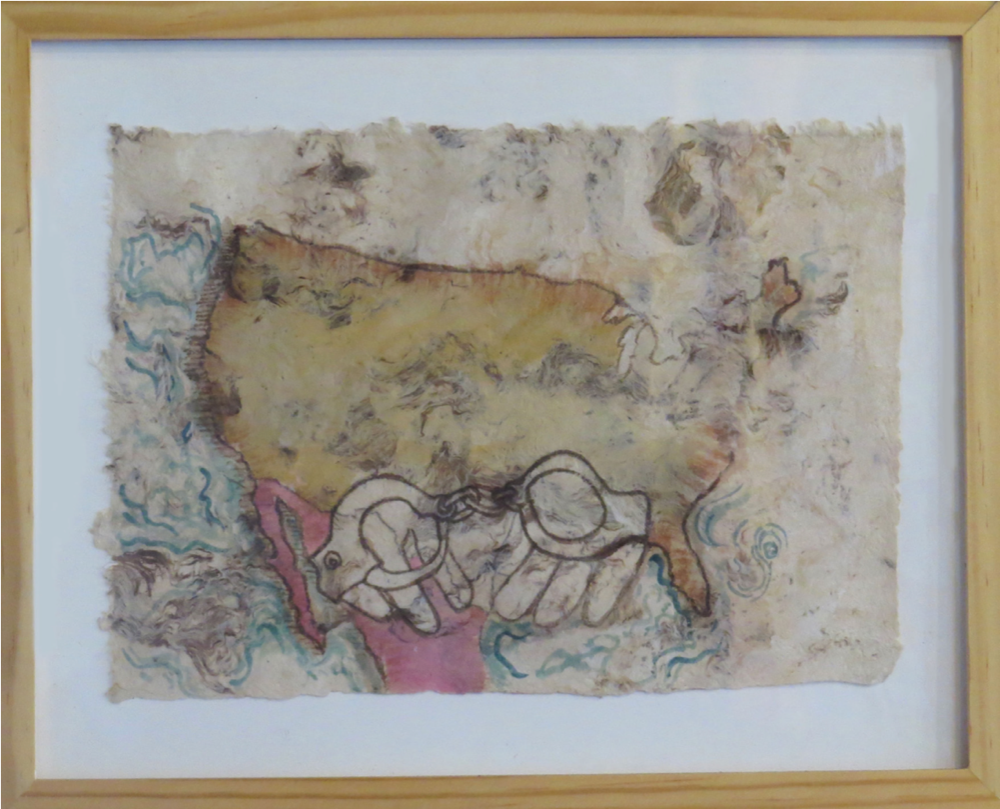
Sandy Rodriguez, Chile Handcuffs, Watercolor, 9" x 12", 2019.
Sandy Rodriguez
Sandy Rodríguez is a Los Angeles-based artist whose work investigates the methods and materials of painting across cultures and histories. Her Codex Rodríguez-Mondragon is made up of a collection of maps and specimen paintings about the intersections of history, social memory, contemporary politics, and cultural production. Teaching across constituencies is part of her artistic practice and embodies her belief that artists are critical to reshaping our time and place.
Rodríguez earned her BFA from California Institute of Arts and has exhibited at a
number
of regional institutions including the Museum of Contemporary Art San Diego; Art+Practice,
Los Angeles; and the Riverside Art Museum. Her work has been exhibited in the MexiCali
Biennial, and in January 2020 she will present a solo exhibit at Charlie James Gallery
in Chinatown, Los Angeles. Her work has been featured on KCRW’s Press Play, KCET,
LA TIMES, Spectrum News 1, CBC Radio Canada Hour le Monde, KQED Statewide Report,
and KPCC’s Off Ramp.
For the SUR:biennial, Rodríguez presents a site-specific installation consisting of two hand- processed watercolor paintings on hand-made amate paper, alongside an acrylic on-acrylic mobile chandelier and a specimen display titled Underworld, Terrestrial Realm and a Fusing of the Two, which gathers bits of wood, minerals, organic colorants and other ingredients utilized in the production of hand-processed pigments that she utilizes in her work.

Stay Connected